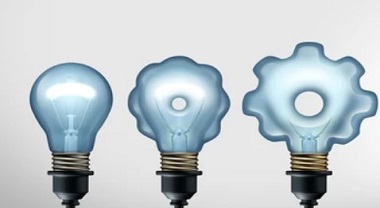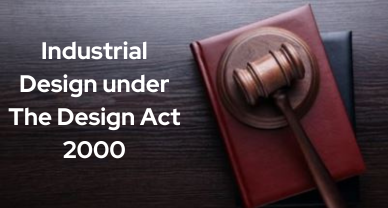Registration and Protection Of Industrial Design In India
Intellectual Property Rights come in various forms. One of them is ‘Design’ which is a composition of colors, shapes patterns, etc which add value and attraction to the product. Designs are advantageous assets that can be protected only if registered under the Designs Act, 2000. In this blog we will talk about the process of registration and what type of protection is provided under the designs act.
[Picture Credit: Shutterstock]
Industrial Design is a sort of intellectual property right which constitutes shapes, lines, patterns, or colors which protect the aesthetical and ornamental aspects of a product. It gives a distinct recognition to the product and helps to identify the genuine and authentic source of its origination. It protects the following few elements of a product:
- Packaging of a product
- Parts of a product
- Logos
- Typefaces
- Website Designs
- Composite Products
- Maps and Drawings
These elements are not limited to the aforementioned. The design created for your brand brings enormous value to the business. The renown it gains helps ameliorate your competitive stride in the market.
There is always the deleterious possibility of said design being attempted to be imitated or infringed upon. Therefore, the Designs Act, of 2000 protects against such violations as well as safeguards the rights of a design proprietor. However, for the acquisition of the protection, it is mandatory to get your brand registered under the designs act.
The Controller-General of Patents, Designs, and Trade Marks appointed under sub-section (1) of section 4 of the Trade and Merchandise Marks Act, 1958 (43 of 1958) shall be the Controller of Designs for this Act.
PROTECTION OF DESIGN
- Designs Act, 2000- When acts of infringement are conducted for commercial objectives, the owner of a registered industrial design or a design patent has the right to restrict third parties from creating, marketing, or importing items bearing or incorporating a design that is a copy, or substantially a copy, of the protected design with the opportunity of the registered design holder to file a suit against the infringer, who in turn if guilty shall be liable to pay monetary compensation of Rs. 25,000 which may extend up to Rs 50,000.
- The Paris Convention, 1883- Patents, trademarks, industrial designs, utility models, service marks, trade names, geographical indications, and the repression of unfair competition are all covered by the Paris Convention, which was enacted in 1883. This international agreement was the first major step toward assisting creators in ensuring the protection of their intellectual works in other nations. The Paris Convention includes India as one of the signatories. As a result, the regulations governing the right of priority apply. Based on a regular application first submitted in any of the contractual statuses, the applicant may apply for design protection in other contracting states within a six-month period which starts from filing the first application in India. The second application will be processed as if it had been filed the same day as the first.
ADVANTAGES OF DESIGN REGISTRATION
Several benefits come along with the registration of a design in India. In my opinion, some of them are:
- Legal protection– If any act of infringement occurs; the holder can exercise their exclusive right of filing a suit for the damage caused. Thus, potential infringers fear the probability of facing these charges.
- Gives autonomy- If you get your design registered, you become the sole authorized user of said design and your competitors become incompetent of using similar designs which leads to an increase in your brand value.
- Builds goodwill– Since a design provides distinctiveness and uniqueness to a particular product, it gets linked with the reputation and goodwill your brand receives which in turn adds up to being an intangible asset.
- Longevity of duration– The validity period of design after registration is10 years from the registration date, which thereafter, can be renewed.
- An intangible asset– Income can be earned by selling, transferring, or exporting even parts of your design.
REGISTRATION PROCESS OF DESIGN IN INDIA
The registration of a design is mandatory for receiving legal benefits. Schedule 2 of the Designs Act, 2000 consists of all the essential registration information, under sections 3- 10. The information and documents necessary for registration:
- General Power of Attorney (POA) signed by the proprietor
- Four copies of Representation of the design on A4 size.
- List of countries to claim the priority, if any, where the application/applications for design have/ have been filed, along with the date and application number.
- Application with Form 1 of designs act.
- Name and detailed address of the applicant
- Nature/legal status of the applicant i.e. whether the applicant is a natural person or company etc.
- Statement of novelty
PROCEDURE
- Application filing– The first step of the registration is to apply along with the necessary documents and the prescribed fee at any branch of the Indian Patent Office (IPO). A date and a number are thus provided to the applicant
- Examination– An examiner from the Controller of Designs is appointed to check whether the statutory requirements are met by the applicant following the Designs Act, 2000 and if the application entails all the accurate details and amount of fees.
- If an objection is raised – The procedure has to take place within 6 months. Communication for the objections is held, if the compliance towards registration is not followed then the application stands abandoned. If the compliance is followed and accepted by the examiner, then the application is accepted. Compliance here comes due with the reply of the applicant after a said objection has been raised by the examiner. However, if the examiner is not satisfied with the response, then a hearing is held. If the applicant yet again does not succeed, then the application remains unregistered. The applicant can go on to appeal in the high court.
- If no object is raised- If all the correct measures have been taken and there are no opposing arguments to the application, then the application is accepted.
- After Acceptance– When all resolutions are solved and objections are rectified, then a notification is sent within the Office Journal, and under section 9, a certificate of registration of issued.
- Public View- According to section 7, The Controller shall, as soon as possible following the registration of a design, cause publication of the design’s specified particulars in the manner prescribed, and the design shall thereafter be open to public view.
CONCLUSION
There are tons of advantages of getting your design registered and the registration process is in itself quite secure which inculcates the views of not just the examiner but also the public. To protect your design from infringement and exercise your exclusive powers as a designed holder, registration is vital.
Author: Gurveen Kaur – a intern at IP And Legal Filings, in case of any queries please write back us via email at support@ipandlegalfilings.com.




